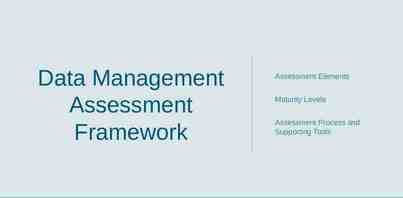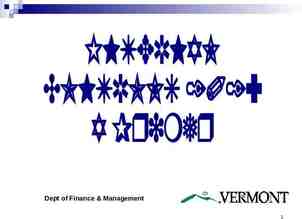Child Protection Training Training prepared by: University
44 Slides575.50 KB
Child Protection Training Training prepared by: University of Tennessee Human Resources
About this Training Program University of Tennessee Safety Policy 575 requires all “Program Directors” and “Covered Adults,” as defined under the policy, to complete this training. A copy of that policy can be found at policy.tennessee.edu. This training program is the equivalent of 1 hour of training. This training program counts toward HR128. Your completion of this training program will be recorded by the Skillport eLearning system. Training program completions will be entered weekly into IRIS.
TENNESSEE LAW: MANDATORY REPORTING OF CHILD ABUSE AND CHILD SEXUAL ABUSE
Every person in the University of Tennessee community – faculty, staff, students, volunteers, and contractors – has a legal responsibility to report child abuse and child sexual abuse.
Who is Required to Report Child Abuse? Some states only require people in certain professions to report child abuse (e.g., doctors, teachers). Tennessee is not one of those states. In Tennessee, any person who has knowledge of child abuse must report it, and any person who has knowledge of or reasonable cause to suspect child sexual abuse must report it. Source: Tennessee Code Annotated §§ 37-1-403; 37-1-605
Mandatory Reporting of Child Abuse Tennessee law mandates immediate reporting by: any person; who has knowledge of or is called upon to render aid to; any child who is suffering from or has sustained; any wound, injury, disability, or physical or mental condition; if the harm: is of such a nature as to reasonably indicate that it has been caused by brutality, abuse, or neglect; or on the basis of available information, the harm reasonably appears to have been caused by brutality, abuse, or neglect. Source: Tennessee Code Annotated § 37-1-403
Legal Definitions – “Child” Child: Child any person who is under age 18 or who is reasonably presumed to be under age 18. For purposes of the Tennessee mandatory reporting law, University students who are under age 18 are not excluded from the definition of “child.” Source: Tennessee Code Annotated § 37-1-102
Legal Definitions – “Abuse” Abuse: Abuse exists when a person under age 18 is suffering from, has sustained, or may be in immediate danger of suffering from or sustaining a wound, injury, disability, or physical or mental condition caused by brutality, neglect, or other actions or inactions of a parent, relative, guardian, or caregiver. Source: Tennessee Code Annotated § 37-1-102
Mandatory Reporting of Child Sexual Abuse Tennessee law also mandates immediate reporting by any person who knows or has reasonable cause to suspect that a child has been sexually abused. The next three slides will give examples of child sexual abuse. Source: Tennessee Code Annotated § 37-1-605
Types of Child Sexual Abuse One type of “child sexual abuse” is the commission of any act involving the unlawful sexual abuse, molestation, fondling, or carnal knowledge of a child under age 13 that constitutes the criminal offense of: – Aggravated rape (T.C.A. § 39-13-502), aggravated sexual battery (T.C.A. § 39-13-504), aggravated sexual exploitation of a minor (T.C.A. § 39-17-1004), or a criminal attempt to engage in any of those acts; – Especially aggravated sexual exploitation of a minor (T.C.A. § 39-17-1005); – Incest (T.C.A. § 39-15-302) or rape ( T.C.A. § 39-15503); – Sexual battery (T.C.A. § 39-13-505); or – Sexual exploitation of a minor (T.C.A. § 39-17-1003). Source: Tennessee Code Annotated § 37-1-602
Types of Child Sexual Abuse A second type of “child sexual abuse” is an act committed by the child’s parent, guardian, relative, person residing in the child’s home, or other person responsible for the care and custody of the child, that involves the unlawful sexual abuse, molestation, fondling, or carnal knowledge of a child age 13 through age 17 that constitutes the criminal offense of: – Aggravated rape (T.C.A. § 39-13-502), aggravated sexual battery (T.C.A. § 39-13-504), aggravated sexual exploitation of a minor (T.C.A. § 39-17-1004), or a criminal attempt to engage in any of those acts; – Especially aggravated sexual exploitation of a minor (T.C.A. § 39-17-1005); – Incest (T.C.A. § 39-15-302) or rape ( T.C.A. § 39-15-503); – Sexual battery (T.C.A. § 39-13-505); or – Sexual exploitation of a minor (T.C.A. § 39-17-1003). Source: Tennessee Code Annotated § 37-1-602
Child Sexual Abuse – Other Types Any penetration of the vagina or anal opening of one person by the penis of another person, whether or not semen is emitted; Any contact between the genitals or anal opening of one person and the mouth or tongue or another person; Any intrusion by one person (including an object) into the genitals or anal opening of another person (excluding valid medical intrusions) Source: Tennessee Code Annotated § 37-1-602
Child Sexual Abuse – Other Types The intentional touching of the genitals or intimate parts, including the breasts, genital area, groin, inner thighs, and buttocks, or the clothing covering them, of either the child or the perpetrator (excluding a valid medical touching and an objectively reasonable caretaker touching); or The intentional exposure of a person’s genitals in the presence of a child, or any other sexual act intentionally perpetrated in the presence of a child, if such exposure or sexual act is for the purpose of sexual arousal or gratification, aggression, degradation, or other similar purpose. Source: Tennessee Code Annotated § 37-1-602
Where to Report Child Abuse/Child Sexual Abuse In the event of a life threatening emergency, a report of child abuse or child sexual abuse should be made immediately by calling 911. In other cases, a report of child abuse or child sexual abuse must be made immediately to one of the following authorities outside the university: university o Tennessee Department of Children’s Services (DCS), by calling the 24-hour Central Intake Child Abuse Hotline at 1877-54ABUSE (1-877-542-2873) or 1-877-237-0004 – you may report without giving your name o The sheriff of the county where the child resides o The chief law enforcement official of the city where the child resides o A judge having juvenile jurisdiction over the child Source: Tennessee Code Annotated §§ 37-1-403; 37-1-605
Where to Report Child Abuse/Child Sexual Abuse Reporting to University police, a supervisor, or any other University official or employee does not satisfy an individual’s legal duty to report child abuse or child sexual abuse to one of the external authorities listed on the previous slide (e.g., DCS). Your identity as a reporter is confidential under Tennessee law. Source: Tennessee Code Annotated §§ 37-1-403; 37-1-605
Reporting Child Abuse/Child Sexual Abuse (Step Two for UT Employees) After reporting child abuse or child sexual abuse to one of the appropriate authorities outside of the University, a University employee shall also provide notice of the report to: his/her supervisor; University police; or the Office of the General Counsel. Employees who have been identified by the University as “campus security authorities” for purposes of compliance with the Jeanne Clery Disclosure of Campus Security Policy and Campus Crime Statistics Act shall evaluate whether there is also a legal duty to report the incident to the University Unit responsible for compiling and reporting crime statistics. Source: University of Tennessee Safety Policy 575
Protection for Reporters Tennessee law provides immunity from civil and criminal liability for any person who makes a good faith report of suspected child abuse or child sexual abuse. University policy prohibits retaliation against a person who makes a good faith report of suspected child abuse or child sexual abuse, or participating in an investigation of suspected child abuse or child sexual abuse. Sources: Tennessee Code Annotated § 37-1-410; University of Tennessee Safety Policy 575
Potential Penalties for Failing to Report Criminal penalties under Tennessee law Class A misdemeanor Fine not to exceed 2,500 Disciplinary action under University policy Sources: Tennessee Code Annotated § 37-1-412; University of Tennessee Safety Policy 575
False Accusations It is a criminal offense for a person to knowingly and maliciously report, or cause, encourage, aid, counsel, or procure another to report, a false accusation of child abuse or child sexual abuse Class E felony Source: Tennessee Code Annotated § 37-1-413
BEYOND REPORTING: HOW TO RESPOND TO A SITUATION OF POTENTIAL CHILD ABUSE/CHILD SEXUAL ABUSE
Beyond Reporting: How to Respond Reporting is just one element of proper response to child abuse and child sexual abuse. Your reaction is very important; it is often difficult for a child to talk about abuse. When a child tells you he/she has been abused: Choose your words carefully—don’t be judgmental about the child or the alleged abuser Do not interrogate the child Listen and let the child tell his/her own story Be calm—your reactions can confuse or scare the child Assure the child that you believe what he/she says
Beyond Reporting: How to Respond Ways to respond, continued: Find out what the child wants and be honest about what you can do – the child may want you to promise that you won’t tell others – tell the truth and do not make promises Assess whether the child is in immediate danger Let the child know his/her feelings are okay Assure the child that you care and that it’s not his/her fault Tell the child that you’re glad he/she told you and that you will get help
RECOGNIZING THE SIGNS, SYMPTOMS, AND EFFECTS OF CHILD ABUSE AND CHILD SEXUAL ABUSE
Signs and Symptoms of Physical Abuse Unexplained burns, bites, bruises, broken bones, black eyes Fading bruises or other noticeable marks Child seems frightened of parents and protests or cries when it is time to go home Shrinks at the approach of adults Reports injury by a parent or another adult caregiver Abuses animals or pets
Signs and Symptoms of Sexual Abuse Difficulty walking or sitting Refusing to change for gym or to participate in physical activities Reporting of nightmares or bedwetting Sudden change in appetite Bizarre, sophisticated, or unusual sexual knowledge or behavior Pregnant or afflicted by venereal disease, particularly if under the age of 14 Running away Reporting of sexual abuse by a parent or another adult caregiver Attaching very quickly to strangers or new adults in an environment
Signs and Symptoms of Emotional Abuse Behavior extremes, such as being overly compliant or demanding, extremely passive or aggressive, etc. Delayed in physical or emotional development Behaves inappropriately adult (parents other children) or infantile Has attempted suicide Reports lack of attachment to parents/caregivers
Signs and Symptoms of Neglect Begs for or steals food, money, or other items Lacks medical or dental care, glasses, or immunizations Is often dirty and/or has severe body odor Lacks sufficient clothing for the weather Abuses alcohol or drugs States that there is no one at home to provide care
Effects of Child Abuse Child abuse & child sexual abuse can have lasting physical, psychological, behavioral, and societal consequences.
Effects of Child Abuse Physical Psychological Damage to brain and spinal cord Impaired brain development General poor health, including decreased cardiovascular function, asthma, hypertension, obesity, and malnutrition Cognitive delay Low I.Q. Low self-esteem Relationship difficulties in adulthood Increased likelihood for psychiatric disorders such as borderline personality, anxiety disorder, and depression Increased likelihood to develop antisocial traits Behavioral Societal Difficulties during adolescence, including grade repetition, substance abuse, truancy, delinquency, and pregnancy More likely to engage in sexual risk-taking More likely to smoke cigarettes, abuse alcohol, and engage in illicit drug use Increased likelihood to engage in youth and interpersonal violence Child maltreatment is more costly annually than the two leading health concerns, stroke and type 2 diabetes Indirect costs associated with increased use of health care facilities, criminal activity, mental illness, substance abuse, and violence
COMMON PATTERNS OF CHILD ABUSERS AND MOLESTERS
Recognizing Characteristics of Individuals Who Abuse and Molest Children Recognizing typical characteristics of those who molest and victimize children is a key step to preventing child abuse and child sexual abuse. Most child-molestation cases involve offenders who are acquaintances of the child.
Recognizing Characteristics of Individuals Who Abuse and Molest Children Common Traits: Seem preoccupied with children Identify with children better than adults Converse well with children at the child’s level Are well liked by children for reasons not obvious to you Are “always available” to watch children Prefer the company of children to adult relationships Have limited peer relationships with adults Engage in activities with children while excluding adults
Recognizing Characteristics of Individuals Who Abuse and Molest Children Common Traits: Have hobbies and interests that appeal to children Frequently photograph children Engage in frequent contact with children (touching, caressing, wrestling, tickling) Allow children to do questionable things Do not have own children, but knows a lot about current fads, toys, music that are popular for children Spend inappropriate amounts of money on others’ children
Recognizing Characteristics of Individuals Who Abuse and Molest Children Types of offenders: Preferential – often described as the “nice guys;” those with a preference for children are called “pedophiles.” These offenders almost always have a method for gaining access to children. They may seek employment to be in contact with children. They seek and find access to children. – Act to satisfy deviant sexual needs that are often persistent, compulsive, ritualistic, and/or fantasy-driven – Likely to view and be aroused by pornography with specific themes – Have age and gender preferences – Proactive in seeking victims and engage in bold and repeated attempts to molest children – Invest lots of time, money, and energy to fulfill sexual desires
Recognizing Characteristics of Individuals Who Abuse and Molest Children Types of offenders: Situational – less likely to have sexual preferences for children, but may engage in sexual relations with children for different reasons. – Act to satisfy basic sexual needs or non-sexual needs, such as power or anger – Sexual behavior is opportunistic and impulsive – Victims targeted based on availability and opportunity – Focus on general victim characteristics (age, gender, race, etc.) – Molest children they have the greatest access to and control over – Pubescent teenagers and younger children are common targets because of their weakness, vulnerability, or availability
Recognizing Characteristics of Individuals Who Abuse and Molest Children Methods and Strategies Used to Gain Access to Victims: Seduction/Grooming – takes place over a period of time; offender gathers information, determining the child’s interests and vulnerabilities. Offender then works to lower child’s sexual inhibitions by rewarding with gifts, affection, and attention. Trickery/Coercion/Manipulation – the offender uses the child’s natural tendencies to be curious and want affection and attention to lure the child into a situation where the offender is able to molest or abuse the child. The offender will isolate the child from adult supervision.
Recognizing Characteristics of Individuals Who Abuse and Molest Children Methods and Strategies Used to Gain Access to Victims: Force – there is little a child can do to resist force, whether through intimidation, threats, fear, or physical force. Secrecy – a common thread in methods of operation. Secrecy is maintained in several ways, not limited to: – – – – – – Bribery – gifts, affections, favors that interest a child Blame – molester tells the child he/she is at fault Embarrassment – child realizes the act was wrong Loss of Affection – often, the molester is someone the child loves Displaced Responsibility – child blames himself for the molestation Threats – molester threatens the child or the child’s family with physical harm
PREVENTING CHILD ABUSE AND CHILD SEXUAL ABUSE AT THE UNIVERSITY OF TENNESSEE
Campus & Institute Policies for Covered Programs UT Chattanooga Minors on Campus UT Health Science Center Minors on Campus UT Health Science Center HR0110: Employment of Minors UT Knoxville Programs for Minors UT Martin Minors on Campus UT Space Institute HR0110: Employment of Minors UT System HR0110: Employment of Minors UT System SA0575: Programs for Minors UT System SA0550: Minors in Laboratories and Shops
Abuse Prevention Resources Prevent Child Abuse America has a variety of resources that address the prevention of child abuse and child sexual abuse. http://www.preventchildabuse.org
Acknowledgements Special thanks to: The University of Tennessee College of Social Work, Office of Research and Public Service (SWORPS) The Tennessee Department of Child Services Joint Task Force on Children’s Justice/Child Sexual Abuse Shelby County Citizens Review Panel For allowing their online training program, Child Abuse Reporting: Department of Children’s Services, State of Tennessee, to be used as a resource.
Resources Child Welfare Information Gateway. (2013). Long-term consequences of child abuse and neglect. Washington, DC: U.S. Department of Health and Human Services, Children's Bureau. Child Welfare Information Gateway. (2012). Mandatory reporters of child abuse and neglect. Washington, DC: U.S. Department of Health and Human Services, Children’s Bureau. Child Welfare Information Gateway. (2013). What is child abuse and neglect? Recognizing the signs and symptoms. Washington, DC: U.S. Department of Health and Human Services, Children’s Bureau. Counseling Corner Inc. How to Respond to Disclosure of Sexual Abuse. http://www.counselingcorner.net/parents/abuseresponse.html
Resources National Network for Child Care. Responding to Disclosure of Child Abuse. Used with permission from the National Network for Child Care NNCC. Reilly, J. & Martin, S. (1995). Responding to a disclosure of child abuse. Fact sheet 95-12. Reno, Nevada: University of Nevada Cooperative Extension. http://www.nncc.org/Abuse/rspond disclos.html Prevent Child Abuse America. Fact Sheet: An Approach to Preventing Child Abuse. Adapted from: Cohn Donnelly, A. (1997). An Approach to Preventing Child Abuse, Chicago, IL: National Committee to Prevent Child Abuse Prevent Child Abuse America. Fact Sheet: Ten Ways to Help Prevent Child Abuse. Chicago, IL. Ramsworthy, S. and Myers-Walls, J. Talking to a Child Who Has Been Abused. Purdue University Extension: Provider-Parent Partnerships. West Lafayette, IN. http://www.extension.purdue.edu/providerparent/Parent-Provider %20Relationships/Talking Child Been Abused.htm
Resources University of Tennessee Social Work Office of Research and Public Service (SWORPS). Child Abuse Reporting for Tennessee. Nashville, TN: Tennessee Department of Children’s Services. University of Tennessee System Safety Policy SA 575 University of Texas at Austin. (2012) The University of Texas System Child Protection Training. Austin, TX.

















































